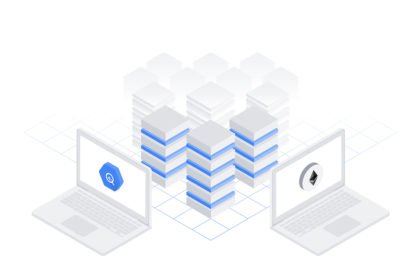The announcement comes just few months after Cloud giant Google introduced Bitcoin blockchain support for its BigQuery data analytics service.
Google Cloud continues to expand its services by launching a new plug-in that allows users to access and analyze Ethereum blockchain data via the company’s BigQuery database tool. All historical data, including daily updates, will be publicly available on the Ethereum blockchain dataset, the statement reads.
While Ethereum has an API for a range of commonly used functions, such as transaction status, information about wallet addresses and balances, it doesn’t yet provide an access to aggregated data stored on the chain. Existing aggregators like CoinMarketCap and Bittrex also have APIs for analyzing crypto markets and even they offer a wider list of coins, they still provide a limited amount of data.
BigQuery is a major analytics platform that will let users much more possibilities for Ethereum blockchain analysis. It can be used to analyze diagrams showing all Ethereum transfers and aggregated transaction cost.
Such visualization, Google says, is “useful for making business decisions, such as prioritizing improvements to the Ethereum architecture itself (is the system running close to capacity and due for an upgrade?) to balance sheet adjustments (how quickly can a wallet be rebalanced?).”
The company has also developed software on Google Cloud that will be able to synchronize Ethereum to computers using Parity, extract data from Ethereum blockchain on a daily basis, including the results of smart contract transactions, and de-normalize and store date-partitioned data to BigQuery for easy and cost-effective exploration.
Additionally, Google has built a tool to visualize smart contracts. The company demonstrated several examples of interesting queries and visualizations on the Ethereum dataset, including CryptoKitties dapp, which is now one of the most popular smart contracts on the Ethereum network.
Among other functions, is the ability to compare the functionality of closed-source smart contracts to open-sourced smart contracts. “Fortunately, many smart contracts’ source code is freely available to use (open source). We can use this to gain some knowledge about what other contracts do from the name of the function, even for those of which we don’t have the source code, because common function names will share a common signature,” the company noted.
The integration of Ethereum network is the second crypto dataset added to Google Cloud this year. A few months ago, the company provided an access to the bitcoin blockchain, saying the tool will help users to get deeper understanding of how cryptocurrencies work by analyzing data in their blockchains.
Last month, Google announced it will ban all crypto mining apps from its Google Play store. The decision, according to the company, comes in response to a growing number of cyberattacks by miners. Similarly, Apple recently banned all crypto mining apps from its App Store.
next